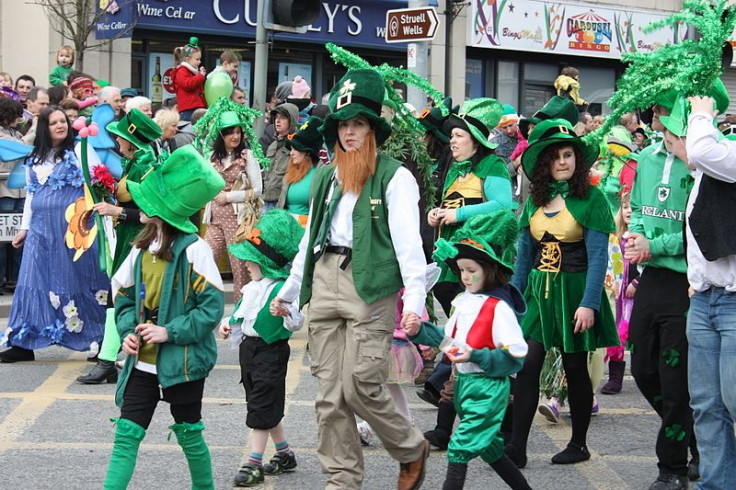St. Patrick’s Day History And Traditions: The Meaning Behind Corned Beef And Cabbage And These 5 Irish Customs

St. Patrick’s Day has become a truly global celebration. Although its roots are distinctly Irish, the holiday is celebrated from New Orleans to Tokyo and even aboard the International Space Station. But despite the popularity of the day, sometimes the significance of its history and traditions can get lost in the shuffle.
“St. Patrick’s Day as we know it is a New World phenomenon,” Patrick Griffin, a history professor at the University of Notre Dame in South Bend, Indiana, told Time. “There’s nothing really Irish about it now; it’s nostalgic and schmaltzy.” Here are the real meanings behind these popular Irish holiday traditions.
Corned beef and cabbage. Contrary to what many people might think, corned beef and cabbage, a staple at almost any St. Patrick’s Day celebration, isn’t the national dish of Ireland. The custom was started in the U.S. among the first generation of Irish-Americans, according to Delish.com. Immigrants yearning for familiar tastes of their homeland craved boiled bacon, but had to settle for beef brisket, the cheapest of meat cuts.
Irish immigrants adopted a technique popular among Eastern Europeans of brining their meat, a method they encountered in New York. Cabbage was the least expensive vegetable at the time, so it, too, became a staple food among Irish-Americans. “Corned” simply refers to the size of the salt crystals used to brine the meat.
Shamrocks. In Catholic tradition, the shamrock represents the holy Trinity. Irish folklore says that St. Patrick, Ireland’s renowned Christian missionary, used shamrocks to explain the doctrine of the Father, Son and Holy Spirit, and how they represent three components of the same God. The shamrock became the national emblem of Ireland and is considered a good-luck symbol.
The color green. Green didn’t always represent St. Patrick’s Day. In fact, blue was traditionally the color associated with the famed patron saint. Given that Ireland has the reputation as the Emerald Isle, green was adopted as the national color and appears on the Irish flag. The wearing of green on St. Patrick’s Day became popular sometime in the 19th century and was a statement of solidarity with the Irish-American community, according to National Geographic.
Leprechauns. Leprechauns are wise beyond their years, bearded and notorious hoarders of gold, but what’s their significance to St. Patrick’s Day? The word leprechaun comes from an Irish word meaning shoemaker, according to LiveScience. In folklore, leprechauns are anything but dignified. Leprechauns traditionally play the role of tricksters in Irish storytelling. They can be ruthless, nasty and unpredictable.
Their connection with St. Patrick’s Day is purely American. People often dress up to look like leprechauns, but many Irish believe the image only perpetuates ethnic stereotypes and don’t appreciate the character being associated with the holiday.
Guinness. On St. Patrick’s Day, the number of pints of Guinness consumed around the world nearly triples. The renowned Irish stout, which originated in Dublin in the early 18th century, was brought to the U.S. hundreds of years ago along with the first Irish immigrants. It remains one of the most popular and successful beers in the world.
The beer appears black or dark brown to many people, but it’s actually a dark ruby red. Guinness is made of roasted malted barley, hops, water and yeast.
Parades. St. Patrick's’ Day parades are part of almost every major holiday celebration in Ireland and beyond. The first St. Patrick’s Day parade was held in 1762 in New York City and was meant to honor St. Patrick.
To this day, the parade has remained a true marchers’ parade. Floats and vehicles are not allowed in the parade, staying true to the holiday’s 18th century roots.
© Copyright IBTimes 2025. All rights reserved.






















